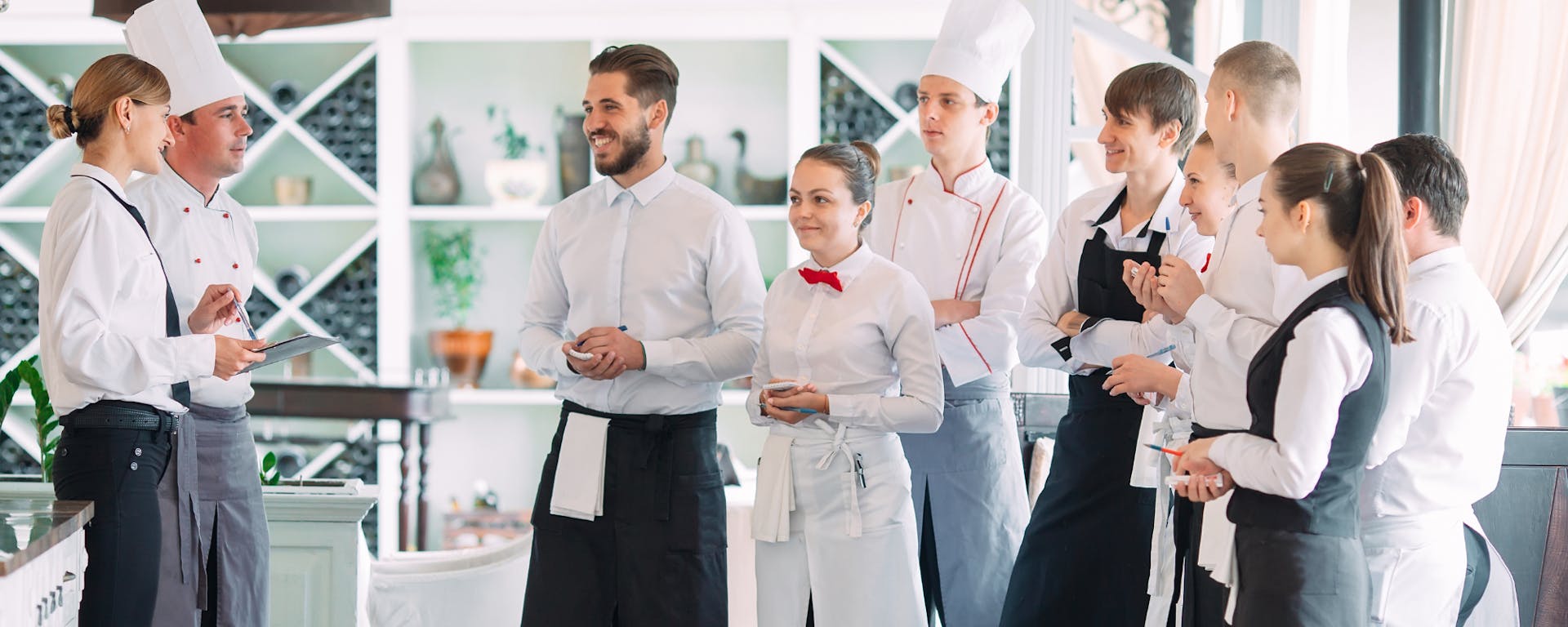If you are a restaurant owner, time and money are the lifeblood of your business. Especially in the high-stakes world of food service, where rapid customer response and efficient operations are essential, technology plays a vital role. That’s where restaurant phone answering service come in. VoIP it’s a powerful solution that’s transforming communication and restaurant call center.
In this article, we’ll explore how VoIP can be a game-changer for restaurant owners looking to streamline operations, cut costs, and provide exceptional customer service. We’ll break down what VoIP is, why it’s gaining traction in the restaurant industry, and the significant advantages it offers over traditional phone systems.
Key takeaway:
- Cost savings: VoIP reduces communication expenses by replacing traditional phone lines with internet-based calls, lowering hardware and maintenance costs for restaurants.
- Improved customer experience: Features like call routing, automated responses, and multi-device compatibility enable faster, more restaurant phone answering service for customers.
- Increased operational efficiency: VoIP integrates with ordering systems, streamlines employee workflows, and provides actionable analytics to optimize staffing and customer service during peak times.
What is VoIP?
VoIP, or Voice over Internet Protocol, is a technology that enables voice communication through the internet rather than traditional phone lines. Instead of relying on a landline connection, VoIP transmits calls digitally, allowing for a range of features that conventional phones simply can’t match. Imagine combining the flexibility of your smartphone with the reliability of a business line, all managed over a single internet connection.
For restaurants, this shift from copper wires to digital signals means adding new tools for managing reservations, taking customer orders, coordinating delivery services, and generally creating a smoother customer experience. Unlike conventional phone systems, which require separate lines for each location, VoIP can operate from multiple devices and even offer features like call routing, automated responses, and call analytics.
Why VoIP Can Be a Solution for Restaurant Phone Answering Service
The restaurant industry is all about speed, efficiency, and adapting to customer needs. VoIP meets these demands by offering flexibility that traditional systems lack.
Let’s imagine you own a small café and need to take orders, manage reservations, and connect with suppliers—all without missing a beat. VoIP makes it possible to handle all of these tasks efficiently.
Let’s dive deeper into more benefits that VoIP offers restaurants.

VoIP as a Call Center Customer Service for the Restaurant Industry
Using a VoIP solution can provide significant benefits and help establish a comprehensive restaurant call center that handles reservations, order taking, and customer service simultaneously.
1. Cost savings
In an industry where margins can be razor-thin, every bit of cost reduction matters. VoIP offers major savings over traditional phone systems in several ways.
- Reduced call and service costs: With VoIP, your calls travel over the internet, eliminating the need for expensive landlines. Monthly costs are typically lower, especially for long-distance calls or multi-location setups. You can read more about PBX.IM’s payment plans here.
- Lower hardware and maintenance costs: Traditional phone lines require substantial upfront investment in hardware and regular maintenance costs. With VoIP, you can use existing devices like computers, tablets, or smartphones.
- Scalability: As your business grows, VoIP scales easily without adding major expenses. If you open a new location or experience a seasonal rush, you can add lines without a major increase in costs. This pay-as-you-grow model is especially valuable for restaurants with changing call volumes during peak seasons.
2. Enhanced Customer Experience
Your customers are the heart of your business, and VoIP helps you serve them better.
- Auto-attendant and call routing: VoIP systems can handle more than just calls. They often come with auto-attendants, enabling you to guide callers based on their needs—reservations, takeout orders, or general inquiries. This automation reduces wait times and ensures customers get the information they need without always needing a human on the line.
- Fewer missed calls and faster response: Missing a customer call often means losing potential revenue. With VoIP features like call forwarding and voicemail-to-email, you can ensure that every call gets answered. If one line is busy, calls can be routed to an available staff member or sent directly to voicemail. It’s also possible to receive voicemails as emails, allowing quick follow-ups.
- Handling peak-hour demands: During rush hours, incoming calls often peak, with people calling to reserve tables, inquire about hours, or place takeout orders. VoIP’s automated features and flexible call routing allow your team to handle peak volumes without overwhelming any one line, helping you stay efficient during your busiest times.
3. Increased Employee Efficiency
Employees who don’t have to juggle multiple devices or lines can focus more on what they do best, serving customers. VoIP reduces the burden on employees and streamlines their workflows.
- Simplified order-taking and reservations: VoIP can integrate with your ordering and reservation systems, allowing employees to input customer details directly into your digital records. No more scrambling for pen and paper; it’s all handled seamlessly.
- Reduced hold times: Long hold times can frustrate customers and lead to lost business. With VoIP’s routing capabilities, calls are directed to the right person faster, reducing the need for customers to wait. This allows employees to focus more on serving customers and less on managing the phones.
4. Advanced Analytics and Insights
In a fast-paced environment like a restaurant, actionable insights can make a world of difference.
- Detailed Call Analytics: VoIP systems often provide detailed analytics on call duration, peak times, and response rates. These insights let you adjust your staffing and call handling during peak times, ensuring you don’t lose customers during busy hours.
- Call Recording and Data Logs: Call recordings allow you to revisit conversations and analyze employee interactions with customers. It’s a useful tool for training and quality assurance, helping you improve service over time.
- Data-driven decision making: With insights into peak call times and common customer inquiries, you can make informed decisions about staffing, menu updates, or even promotional offers, improving service efficiency based on real data.
Steps to Set up Your Own Restaurant Call Center with a VoIP System
Getting started with VoIP isn’t complicated, but a few key steps can make the transition smooth.
- Assess your needs: Start by identifying your communication needs. Determine the number of lines, devices, and features your restaurant requires. Do you need auto-attendants, call recording, or integration with your reservation system? List out the features most important to your operations.
- Choose a provider: Select a VoIP provider that understands the restaurant industry’s specific demands. Look for a provider with strong customer support and scalability options, so you can add or reduce lines as your business changes.
- Transition smoothly: Switching from a traditional system can feel daunting. To ease the transition, test the system during non-peak hours and gradually introduce employees to its features. Most providers offer training or onboarding support, which can help get your team up to speed.
How PBX.IM Helps You Set Up a Restaurant Phone Answering Service
VoIP systems provide restaurant owners with a versatile and cost-effective way to elevate service, streamline operations, and enhance customer satisfaction. By integrating VoIP, restaurants can improve responsiveness, reduce overhead, and empower their staff to focus on delivering an exceptional dining experience. For any restaurant aiming to boost efficiency and profitability, VoIP is a valuable investment that keeps them connected, adaptable, and ready for future growth. PBX.IM can support you in building a transparent and easy-to-use restaurant call center.

Learn how PBX.IM can help you to create restaurant phone answering service.
FAQs Related to Restaurant Call Center
What is VoIP, and how does it work for restaurants?
VoIP enables voice calls over the internet instead of traditional lines, offering cost savings, call routing, and device flexibility, all vital for efficient restaurant operations.
How does VoIP reduce costs for restaurants?
VoIP reduces costs by eliminating landline expenses, offering flat-rate pricing, and reducing hardware and maintenance needs, helping restaurants better manage tight budgets.
Can VoIP improve call center customer service for the restaurant industry?
Yes, VoIP improves customer service with call routing, automated responses, and lower hold times, ensuring customers get prompt and professional assistance every time.
What devices are compatible with VoIP systems?
VoIP is compatible with various devices, including smartphones, tablets, and computers, allowing restaurant staff to take calls from wherever they're needed.
How do VoIP analytics help restaurant owners?
VoIP analytics provide call monitoring on volumes, peak times, and staff responsiveness, enabling restaurant owners to optimize staffing and improve service quality based on data.

I’m a VoIP product strategist with hands-on experience building and scaling communication tools. At PBX.IM , she simplifies complex topics like SIP and cloud telephony to help businesses make smart, confident tech decisions.


